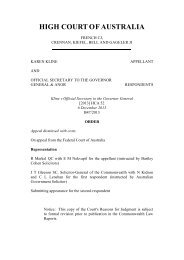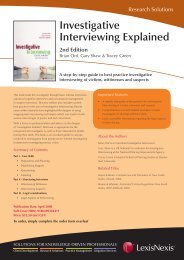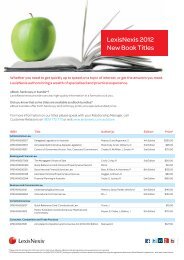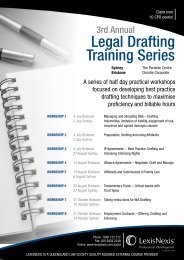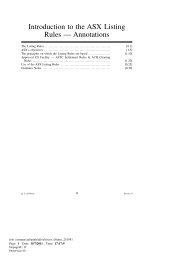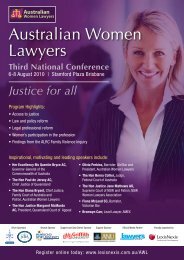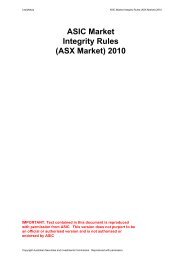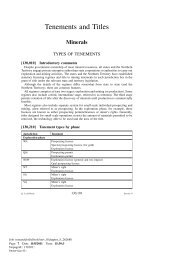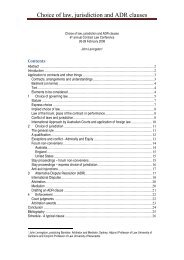Torts: Cases and Commentary - LexisNexis
Torts: Cases and Commentary - LexisNexis
Torts: Cases and Commentary - LexisNexis
Create successful ePaper yourself
Turn your PDF publications into a flip-book with our unique Google optimized e-Paper software.
at *203+: “However, this is in my view a case where the damage would be the<br />
very sort of thing that would be likely to occur in the event of breach, so that<br />
an evidentiary onus would fall on the defendant to show an absence of<br />
causation.”<br />
Queen Elizabeth Hospital v Curtis [2008] SASC 344. Although not expressly<br />
addressing the provisions which provide that in determining liability for<br />
negligence the plaintiff always bears the onus of proving on the balance of<br />
probabilities, any fact relevant to the issue of causation, see detailed<br />
discussion of causation after the observations of Gaudron J in Bennett v<br />
Minister of Community Welfare.<br />
11.10 Causation – common law principles<br />
<br />
<br />
In the text at 11.11, the authors said it may be sufficient to establish<br />
causation that a defendant’s breaches of duty materially increased the risk of<br />
injury to the plaintiff, <strong>and</strong> that risk materialised: see Flounders v Millar [2007]<br />
NSWCA 238, but contrast the remarks of Kieffel J in Roads <strong>and</strong> Traffic<br />
Authority v Royal [2008] HCA 19 at [144]. In Sydney South West Area Health<br />
Service v Stamoulis [2009] NSWCA 153 per Ipp JA (Beazley <strong>and</strong> Giles JJA<br />
agreeing) the court held that a mere material increase in the risk of injury<br />
followed by the eventuation of the risk in question is insufficient to establish<br />
causation. The plaintiff must establish that it was probable that the risk<br />
created by the tortfeasor came home.<br />
Workers Compensation (Dust Diseases) Board of NSW v Smith, Munro &<br />
Seymour [2010] NSWCA 19. One factor can contribute to an outcome even<br />
though, relative to another factor, it has a minor effect. All that is required is<br />
that the effect be "material". Any assessment of this materiality is an<br />
evaluative judgment, <strong>and</strong> it was open upon the evidence to conclude that the<br />
exposure to asbestos was such a material factor: [72]. An ultimate finding of<br />
causation may be based on a number of inferences drawn from primary facts,<br />
which may cumulatively allow the ultimate finding to be made. It depends on<br />
the circumstances as to whether these inferences are available through the<br />
application of logic <strong>and</strong> commonsense, technical inquiry, or expert<br />
assessment. In circumstances where epidemiological studies cannot provide<br />
scientific certainty as to the probability of a material contribution, <strong>and</strong><br />
further uncertainty surrounds the precise experience undergone by the<br />
individual to whom the probability relates, a logically reasoned inference of<br />
material contribution based upon the available expert evidence betrays no<br />
error: [124]–[134].<br />
11.21 Causation – Medical liability case examples<br />
22



